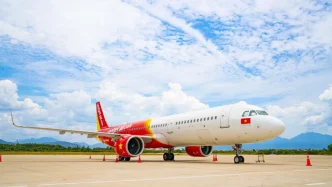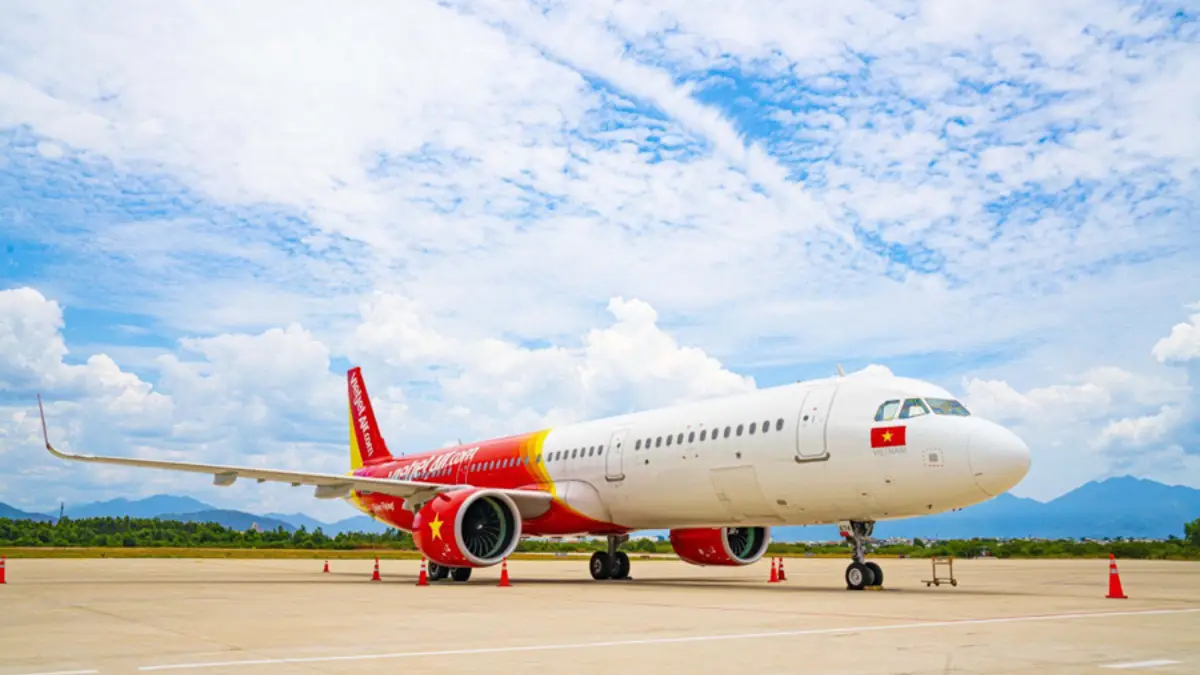In a significant step for Vietnam’s aviation and tourism sectors, Vietjet has launched its first direct air services connecting the coastal city of Nha Trang with three major cities in Russia’s Far East: Vladivostok, Khabarovsk, and Blagoveshchensk. The move, inaugurated in mid-June 2025, signals a new phase in the airline’s international expansion and underscores the growing travel demand between Vietnam and Russia.
A New Gateway to Vietnam
The inaugural flights from Vladivostok and Khabarovsk took off on June 15 and June 18, respectively, with the first service from Blagoveshchensk scheduled for July 9. Operated in collaboration with leading international travel agencies, these routes offer a direct journey of under eight hours, a substantial reduction compared to previous connecting flights. Vietjet highlighted that this efficiency is expected to attract more travelers seeking convenient access to Vietnam’s popular beach destination of Nha Trang, located in Khánh Hòa Province.
Nha Trang, often dubbed the “Riviera of the South China Sea,” has long been a magnet for international tourists, particularly Russians, due to its pristine beaches, vibrant nightlife, and cultural attractions. The direct flights come at a crucial time as Vietnam’s tourism industry rebounds from global travel disruptions, with Russian visitors playing a significant role in this recovery. Over the past five months, Vietnam has welcomed more than 210,000 Russian tourists, over 100,000 of whom visited Khánh Hòa Province, according to official figures.
Economic and Cultural Implications
The introduction of these routes is more than just a boost for tourism; it represents a strategic effort to deepen economic and cultural ties between Vietnam and Russia. Vietjet’s expansion aligns with Vietnam’s broader push to strengthen international partnerships, particularly in trade and tourism, as the country positions itself as a key destination in Southeast Asia. The airline noted that the flights are expected to stimulate activity during the peak summer season, a period when Nha Trang typically sees a surge in visitors.
Beyond leisure travel, the direct connections could facilitate business exchanges and cultural interactions. Vietnam and Russia share a history of diplomatic and economic collaboration, dating back decades to the Soviet era. While trade between the two nations has fluctuated in recent years, tourism has emerged as a consistent bridge, with Vietnamese authorities actively promoting destinations like Nha Trang to Russian markets. The new flights may pave the way for increased investment in hospitality and infrastructure in Khánh Hòa Province, as local businesses anticipate higher demand.
Analysts suggest that Vietjet’s move could also encourage reciprocal travel, with more Vietnamese exploring Russia’s Far East—a region known for its rugged landscapes and historical significance. However, challenges remain, including language barriers and the need for tailored marketing to appeal to Vietnamese outbound travelers. If successful, this two-way travel dynamic could further solidify bilateral relations.
Impact on Vietnam’s Aviation Sector
For Vietjet, often referred to as Vietnam’s leading low-cost carrier, the new routes mark a bold step in its global outreach. Since its inception in 2011, the airline has rapidly expanded its network across Asia and beyond, capitalizing on Vietnam’s growing middle class and the region’s booming travel market. The addition of Russian destinations to its portfolio reflects a calculated risk, as the airline navigates geopolitical uncertainties and fluctuating demand in international markets.
The aviation sector in Vietnam has faced intense competition in recent years, with carriers like Vietnam Airlines and Bamboo Airways vying for dominance. Vietjet’s focus on direct international routes, particularly to underserved regions like Russia’s Far East, could provide a competitive edge. The airline’s partnership with international travel agencies also ensures a streamlined experience for passengers, potentially setting a precedent for future expansions into other non-traditional markets.
However, sustaining these routes will depend on consistent demand and operational efficiency. Fuel costs, regulatory hurdles, and seasonal fluctuations in tourism could pose challenges. Vietjet has not disclosed specific financial projections for the new services, but industry observers note that the airline’s low-cost model may help absorb initial risks while building a loyal customer base.
Tourism Recovery and Regional Growth
The timing of Vietjet’s launch aligns with Vietnam’s broader tourism recovery strategy. The country has set ambitious targets to attract international visitors, with a goal of surpassing pre-pandemic arrival numbers by 2026. Russian tourists, who have historically favored destinations like Nha Trang and Phú Quốc for their warm climate and affordability, are a key demographic in this plan. The direct flights could help Vietnam tap into this market more effectively, bypassing the logistical hurdles of connecting services through hubs like Bangkok or Seoul.
Khánh Hòa Province, in particular, stands to benefit significantly. Local authorities have invested heavily in tourism infrastructure, from luxury resorts to cultural festivals, to position Nha Trang as a world-class destination. The influx of Russian visitors—already evident in the 100,000 arrivals over the past five months—could drive further development, though it also raises questions about sustainability and over-tourism. Environmental concerns, such as beach erosion and waste management, have plagued Nha Trang in the past, and increased visitor numbers may exacerbate these issues if not addressed.
Moreover, the economic ripple effects could extend beyond tourism. Small businesses in Nha Trang, from street vendors to tour operators, are likely to see a boost in revenue as Russian tourists spend on local goods and services. Currency exchange data indicates that Russian visitors often budget generously for holidays, with average expenditures in Vietnam estimated at 35,000 Vietnamese Dong (US$1,400) per trip, though these figures vary by source and season.
Geopolitical Context and Future Prospects
While the new flights are primarily a commercial endeavor, they unfold against a complex geopolitical backdrop. Vietnam and Russia maintain a “comprehensive strategic partnership,” with cooperation spanning energy, defense, and education. However, global tensions, including sanctions on Russia and shifting alliances in Asia, could indirectly influence travel patterns. For now, tourism appears insulated from such dynamics, with both governments encouraging people-to-people exchanges as a soft power tool.
If Vietjet’s routes prove successful, they could inspire similar initiatives linking Vietnam with other regions in Russia or neighboring countries like Belarus and Kazakhstan, where demand for Southeast Asian destinations is also growing. The airline’s ability to adapt to market needs—whether through competitive pricing or enhanced in-flight services—will be critical to long-term viability.
Public sentiment in Vietnam regarding the new flights appears largely positive, with social media posts reflecting excitement about easier access to Russian culture and landscapes. In Nha Trang, hoteliers and tourism operators have expressed optimism, with many preparing tailored packages for Russian guests, including Cyrillic-language menus and guided tours of local landmarks like the Po Nagar Cham Towers.
Looking Ahead
As Vietjet’s direct flights take off, the broader implications for Vietnam’s tourism and aviation sectors are coming into focus. The routes to Vladivostok, Khabarovsk, and Blagoveshchensk are not just about connecting cities; they symbolize a renewed commitment to international collaboration at a time when global travel is reshaping economies and cultures. Whether this initiative will translate into sustained growth remains to be seen, but for now, Nha Trang’s beaches are set to welcome a new wave of visitors, bridging the distance between Vietnam and Russia’s Far East.















